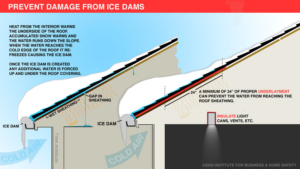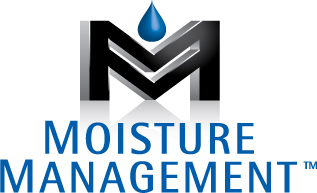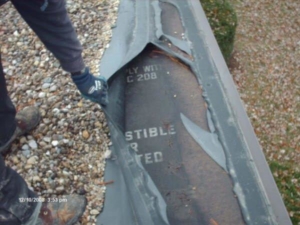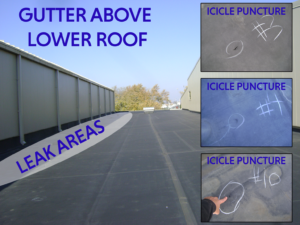The Effect of Indiana Winters on Your Roofing Assets
The unpredictable, yet often harsh, Indiana winters can have several negative effects on low-slope roofing systems. In this article, we will discuss some of the major effects winter has on your roofs and offer some tips to help minimize damage and leaks during the winter months.
Problem #1: Thermal Shock
Thermal shock is a condition that occurs when a drastic temperature change occurs within a 24 to 36-hour time period. As winter nears in the fall season, Indiana mornings are often quite cool, while warming into the 50’s and 60’s later in the day. This extreme change in temperature causes the roof membrane to expand and contract quickly, which can tear open seams, flashing joints, and attachment points on the roof.
Solution: Once more consistent cold weather sets in, have the roof inspected to repair any damage caused by thermal shock during the fall/early winter season. Once winter is over and spring has arrived, have the roof re-inspected to ensure no additional damage has occurred.
Problem #2: Sudden, heavy leaking
As snow and ice accumulate on the roof during the extreme cold in winter, leaks cease as everything is frozen. However, once the temperatures rise and the snow begins to melt, the roof is quickly inundated with moisture. If a defect occurred from thermal shock, there are punctures in the roof, or other open components, the water mass can cause heavy leaking into the building. This can happen particularly if roof drains/gutters are clogged with leaves and other debris, which inhibit quick drainage of the roof.
Solution: Have the roof inspected prior to the onset of winter, make pro-active repairs, and ensure all drains and gutters are free of debris to enable fast drainage.
Problem #3: Roof Damage from Falling Icicles
For multi-level facilities, icicles that form on upper roof sections and fall onto lower roofs can puncture and/or damage the roof membrane. On metal roofs that are above a membrane roof, this danger is even more pronounced, as huge pieces of ice can slide off the panels and onto the roof below.
Gutter joints that leak can also be a source of icicles that can damage a roof, or even worse, cause injuries to people on the ground. Keeping the gutters free of debris and the joints leak-free is crucial to preventing these icicles and helping to stop ice damming.
Solution: Protective walkway pads can be installed under the upper roofs to prevent icicle damage, along with snow/ice guards to stop ice falling from metal roofs. There are also warming wires that can be installed in perimeter areas to prevent ice build-up.
Problem #4: Ice Damming

Graphic is courtesy of the Insurance Institute for Business and Home Safety (IBHS) at www.disastersafety.org. Click to enlarge.
Ice damming is a problem that typically occurs on shingle roofs and is caused by one segment of the roof being above freezing, while the roof edge is below 32 degrees. The roof tends to be colder at the edges, since the heat from the internal structure is more concentrated in the middle.
As the melting water heads toward the roof edge, it cools and freezes at the perimeter, causing an ice dam that prevents water from draining off. The ice dam continues to grow until it pushes into the building, where it again melts and forms a roof leak.
Solution: Use a roof rake or broom to keep snow off the roof edges, keep gutters free of debris (to eliminate water standing and freezing), or use a heating system to keep the perimeter edge from freezing. Good attic ventilation can also assist with preventing ice damming.
Conclusion
While Indiana winters can range from mild to severe, they still pose a threat to your roofing systems and building components. But by conducting proper preventive maintenance and roof inspections, you can eliminate some problems before they become leaks into your building. If you have questions about preparing your roofing for the coming winter months, give Moisture Management a call at 317-577-0910.








